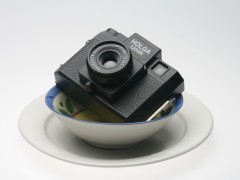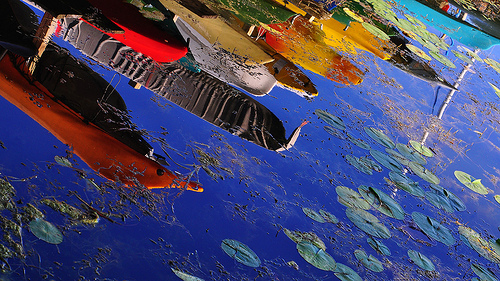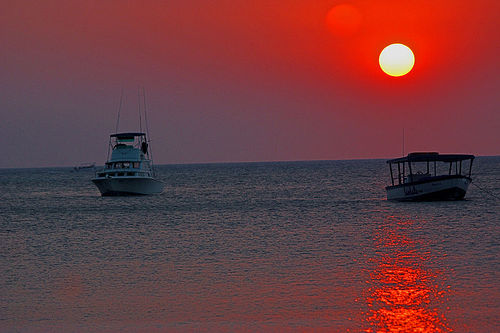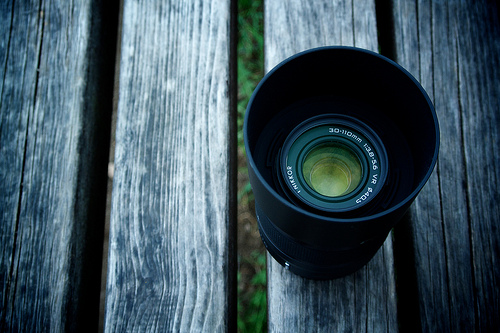Author’s Intro: This article is contributed by Subroto Mukerji. Subroto is an amateur photographer of long standing who especially loves to review cameras, lenses, etc. As a passionate hobbyist, he also loves to share his thoughts and insights on various topics related to photography.
 I became serious about photography in the late seventies of the last century, well before the dawn of the digital era. A 50 mm f/1.4 ‘standard’ lens was what usually came with the camera, with F 1:1.7 or F 1:1.8 as the cheaper alternatives. After getting my Minolta XE-1 (Ha! Minolta pipped Fujifilm to the post over three decades ago!) and the superfast 58 mm F/1.2 lens that came with it, I went on to acquire, after considerable effort, a 28 mm F/2.8 wide angle and a 100 mm F/2.5 — both original Minolta Rokkor lenses.
I became serious about photography in the late seventies of the last century, well before the dawn of the digital era. A 50 mm f/1.4 ‘standard’ lens was what usually came with the camera, with F 1:1.7 or F 1:1.8 as the cheaper alternatives. After getting my Minolta XE-1 (Ha! Minolta pipped Fujifilm to the post over three decades ago!) and the superfast 58 mm F/1.2 lens that came with it, I went on to acquire, after considerable effort, a 28 mm F/2.8 wide angle and a 100 mm F/2.5 — both original Minolta Rokkor lenses.
While the amazing 58 mm F/1.2 gave me the ability to shoot indoor shots in dim lighting even on Kodachrome 64, the light, small and fast 100 mm tele-lens whetted my appetite for portraiture. Using Kodak Tri-X (400 ASA), I could easily take tight head shots by room lighting, resting my camera on the back of a chair or other steady support.
But I still hankered for greater flexibility when composing my portraits and I soon got lucky with a Hanimex 90~230mm f. 4.5~5.6 zoom lens. It was not very sharp, but in natural light, outside in open shade, I could pull off some great portraits using cine-stock 80 ASA ORWO film rated at 125 ASA, bought in bulk and self-loaded into old 35mm film cans. In fact, the slight softness of the photos was ideal for portraits of ladies and babies!
But I missed the super sharp pictures I always got with the fixed focal length – i.e., ‘prime’ lenses and used the Hanimex only when field compulsions left me with no choice. I finally managed to lay my hands on a Rokkor 200mm F 4.5 telephoto lens, which became my primary (no pun intended) armament for birds and wildlife (till I got a Kalimar 500 mm F 8 mirror lens). All these Rokkor prime lenses were extremely sharp, even wide open. And that is why these prime lenses score over zooms.
The Distinguishing Features Of A Prime Lens
- Prime lenses are relatively small and light: Since they have simpler optical constructions than zooms, primes are lighter and usually smaller and cheaper than zooms.
- Prime lenses are faster: Thanks to the optical formula of a prime lens, it is usually much faster than a zoom in its category. This also means it is either cheaper or the manufacturer has more leeway to lavish greater optical flourishes on it. The 50 mm F 1.4 Nikkor is well known as one of the sharpest lenses ever made. The latest version, the AFS 50 mm F 1.8G is the best one from the Nikon stables so far, outperforming even the F 1.4 and amazingly, it retails new one for a mere USD 200! No lens ever gave so much quality for so little money.
- Prime lenses are associated with beautiful bokehs: At the wider apertures (the 50 mm F 1.8 Nikkor gives amazing sharpness from F 2.8 onwards), backgrounds melt away like ice-cream on a hot summer’s day! This enables excellent separation of the subject from the background and makes pictures pop. It is also very handy for food, portrait and product shots, for example, when you need to isolate / highlight a particular feature of a person or an item, throw the rest out of focus.
Bokeh (as the quality of the defocused background is known) is thus a valuable side benefit and a highly prized one at that, which most fast primes confer. Even a fast 24 mm wide angle lens (as you know, wide- angle lenses confer enormous DOF) like the 24 mm F 1.8 Nikkor will de-focus backgrounds if you follow the rules for getting a shallow depth of field.
- Prime lenses tend to be cheaper: Primes are usually much cheaper to buy than fast zooms. It is only now, in April 2013, that Sigma has released the world’s first F 1.8 zoom (18~35 mm, with F 1.8 aperture being available throughout the zoom range). The 64 million dollar question, however, is how it performs wide open – any modern zoom can give quite decent results at F 5.6, but will that help in low light if you are an inexperienced shooter? Remains to be seen … I’m keeping an open mind till test results come in. A point worth bearing in mind is that this lens weighs about a ton! I’d much rather carry my little 18-55mm kit lens, which is an excellent performer. A trio of 24, 35 and 50 mm lenses would be light and very easy on the shoulder, besides offering great optical quality.
The Downsides Of A Prime Lens
Oh yes, it’s not all milk and roses in fixed-focal-length land. Primes have their downsides, like almost everything else in life… Here we look at the cons – the disadvantages of prime lenses.
- Image stabilization in prime lenses come at a cost: That’s right, buddy, you’re on your own, after being pampered by VC, VR or IS call it what you will. Now you’re at par with old timers like me. VR prime lenses are priced at such a high price that it’s only within the reach of wealthy amateurs, leave behind the common man who can just gaze at these astronomically priced glasses. Example of VR prime lenses — AF-S Nikkor 800mm f/5.6E FL ED VR priced at 22374.739 USD; AF-S Nikkor 200mm f/2G ED VR II priced at 7804.781 USD.
- Changing lenses often results in dust on the sensor: Camera sensors are electrically charged and are magnets for dust. If you tend to change the lenses often in dusty locations then your new dslr will soon be undergoing treatment in the service depot. In film cameras, we just blew dust off the mirror with a blower brush. If dust began to leave scratches on the film, we’d open the back and give it a blast of air as well. Not so today; sensor cleaning is serious business, best left to an authorized service outlet.
- Lack of flexibility: Ken Rockwell, whose sanity if not probity is constantly called to question, says he always keeps his 35 mm f. 1.8G lens on his camera. He advocates we should ‘zoom with our feet’ or work the shot (just a paraphrase) if we need to compose a shot. That’s baloney. Not only does perspective change with distance, I can’t imagine myself walking up to a possible subject (of a candid portrait) in a restaurant and poking my lens in his / her face. Or may be for a distant shot like this one:
On the other hand, I’ve often captured great candids with a pocket zoom under the same circumstances. Primes just might be ideal for walkabout street shooting, but I wouldn’t try it. For architectural shots, maybe, but not for people pictures. I should know; I’ve tried both.
Final Verdict — Are Prime Lenses Any Better Than Fast Zooms
That’s my take on the great ‘zoom vs prime’ lens debate. Every time I put my 50 mm f. 1.8G prime lens on my camera, I recall the day when I happened to be 20 feet away when an amazing event took place. An Adjutant Stork, who was being ‘buzzed’ (harassed by sharp, close fly-bys) by a Snowy White Egret suddenly snapped at it and caught it by the beak in mid-air!
Sadly, for some forgotten reason, I had a 100mm lens on my film camera, whereas I needed at least 200mm for a negative with enough detail to produce a winning print. Outcome: I had to trash all the three shots I got. They just couldn’t take the cropping needed for quality prints.
Moreover, modern zooms are improving by leaps and bounds, giving photographers enough incentive to jettison their ‘old-baggage’ mindsets about zooms. So, while primes have all the advantages, for me the flexibility of zooms doesn’t allow prime lenses to score over the other. It’s like this — each for its purpose scores; each for its purpose defeats!
What do you prefer — prime lens or a zoom lens?
Author’s Intro: This article is contributed by Subroto Mukerji. Subroto is an amateur photographer of long standing who especially loves to review cameras, lenses, etc. As a passionate hobbyist, he also loves to share his thoughts and insights on various topics related to photography.





